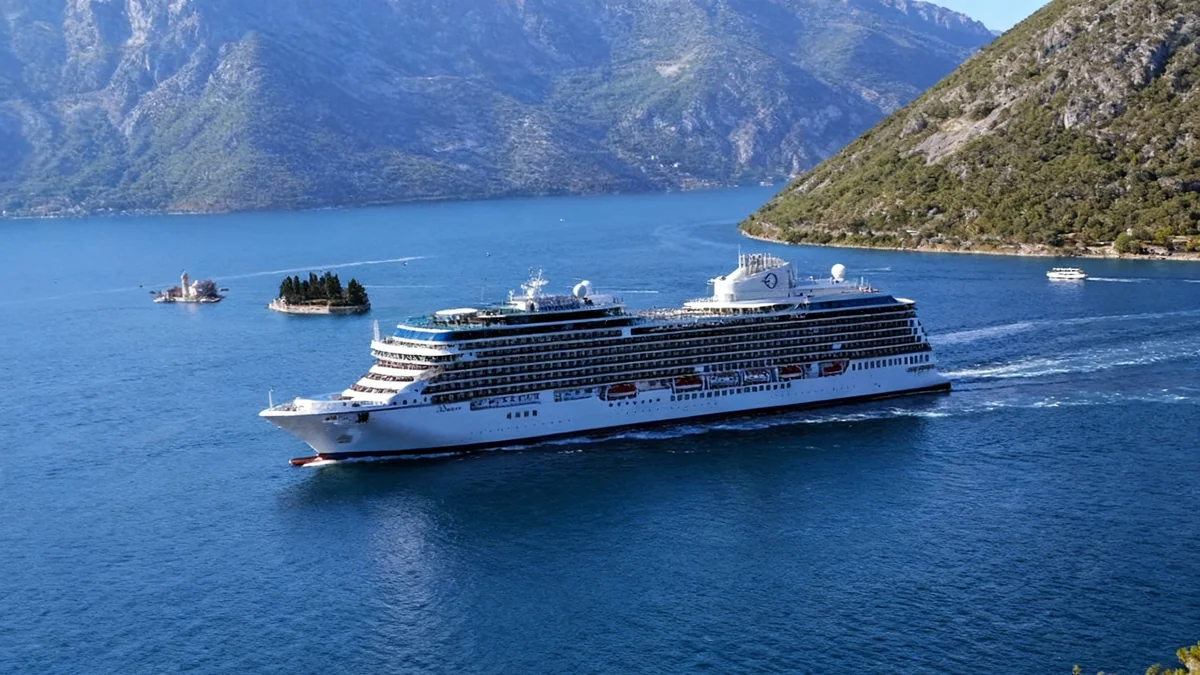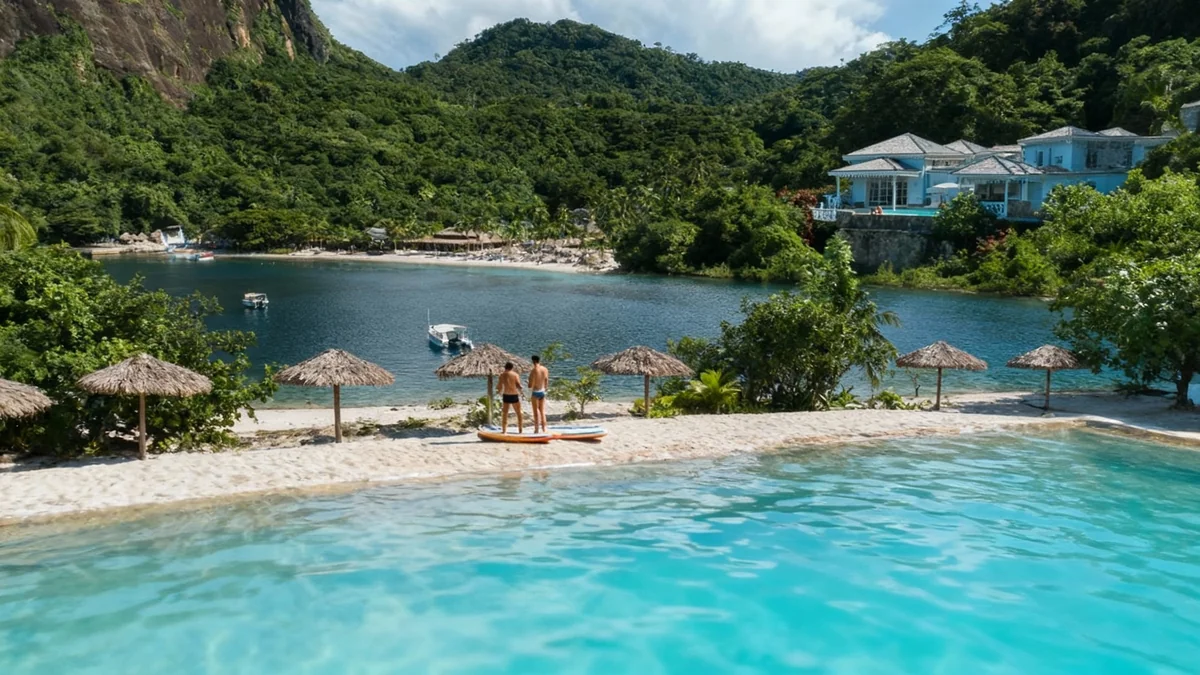Norwegian Cruise Line is shifting away from providing printed daily activity schedules in guest cabins. Passengers on board the company's ships have observed that paper copies of the 'Freestyle Daily' newsletter are no longer being delivered as a standard service. This change means guests are now primarily directed to use digital alternatives to access information about the next day's events and activities.
This move is part of a broader series of operational adjustments by the cruise line. The company aims to streamline onboard services and adapt to modern guest preferences for digital information access. The shift impacts how passengers plan their daily activities and dining experiences while at sea.
Key Takeaways
- Printed 'Freestyle Daily' newsletters are no longer standard in staterooms.
- Guests are encouraged to use digital versions via their phones or interactive TVs.
- Printed copies remain available upon request or at designated pick-up points.
- Norwegian Cruise Line has also introduced new fees for specialty dining no-shows and extra main dining room entrees.
- Beverage packages will no longer be valid at Great Stirrup Cay from March 1, 2026, with a new island-specific package planned.
Transition to Digital Information
Guests aboard Norwegian Cruise Line vessels have noted a change in how they receive daily activity information. The traditional paper 'Freestyle Daily' newsletter, which outlined the next day's schedule of events, is no longer automatically placed in staterooms each evening. This update was reported by passengers on social media platforms.
Instead of paper copies, passengers are now being asked to access a digital version of the newsletter. This digital program can be viewed on personal mobile devices. On some ships, an interactive television system in the staterooms also provides access to the daily schedule.
Digital Shift
The 'Freestyle Daily' traditionally included a schedule of activities and events for the following day. According to Norwegian Cruise Line's website, this program was historically delivered to guest staterooms every evening. The shift to digital reflects a growing trend across the hospitality industry.
Accessing the Daily Program
While the standard delivery of printed programs has ceased, guests still have options to obtain a physical copy. Passengers have reported that printed versions can be requested from guest services. Additionally, these programs are available for pickup at specific locations around the ship, such as reception desks or information centers.
This approach allows the cruise line to reduce paper waste while still providing printed options for those who prefer them. The primary method, however, is now digital, aligning with consumer habits for accessing information on mobile devices.
Recent Policy Updates
This change in daily program delivery is one of several recent adjustments made by Norwegian Cruise Line. The company has implemented various updates to its onboard policies. These changes cover areas from dining reservations to beverage packages, affecting different aspects of the guest experience.
One notable policy update involves specialty restaurants. Norwegian Cruise Line has introduced a new fee for guests who do not show up for their scheduled reservations. This policy aims to reduce wasted table space and improve reservation management.
"Guests will now be required to pay a $10 fee per person if they arrive later than 15 minutes for their scheduled reservations."
This fee applies to guests who are more than 15 minutes late for their booking. It also applies to those who simply do not appear for their reservation. The $10 per person charge is designed to encourage timely arrivals and reduce no-shows, which can impact other guests' ability to dine at popular venues.
Industry Trends
Many cruise lines and land-based resorts are exploring ways to optimize operations and enhance guest satisfaction through technology. Digital daily planners are becoming more common, offering real-time updates and personalized experiences. Similarly, fees for no-shows are a practice seen in various sectors of the hospitality industry.
Dining and Beverage Changes
Beyond specialty dining, Norwegian Cruise Line has also adjusted its policies for main dining rooms. A new charge has been added for passengers who order extra entrees. Guests will now incur a $5 fee for each entree ordered after their first one in the main dining areas across the fleet.
This policy encourages guests to order responsibly and helps manage food waste. It also represents another revenue stream for the cruise line. The change applies across all ships within the fleet.
More recently, the company announced modifications to its beverage package policy. Starting March 1, 2026, existing beverage packages will no longer be honored at Great Stirrup Cay. This is Norwegian's private destination in the Bahamas.
- $10 per person: No-show fee for specialty restaurants (if more than 15 minutes late).
- $5 per entree: Charge for additional entrees ordered in main dining rooms after the first.
- March 1, 2026: Date when existing beverage packages will cease to be valid at Great Stirrup Cay.
Norwegian Cruise Line is preparing to introduce a new, optional drink package specifically for Great Stirrup Cay. This new package will cater to guests visiting the Bahamian island. The details of this new package are expected to be released closer to the implementation date.
Despite these changes, complimentary beverages will still be available at Great Stirrup Cay. According to a statement sent by Norwegian Cruise Line to travel advisors, these include water, iced teas, and juices. This ensures that guests will still have access to basic refreshments without additional cost.
Impact on Guest Experience
The move to digital daily programs aligns with broader trends in travel and hospitality. Many travelers today prefer to use their smartphones for information, booking, and planning. Digital platforms offer convenience, real-time updates, and an environmentally friendly alternative to paper.
However, some guests, particularly those who prefer traditional methods or have limited access to technology, may find these changes less convenient. The cruise line's decision to retain options for printed copies and interactive TV access aims to address these varying preferences.
The introduction of new fees also reflects a strategic decision by the cruise line to manage costs and optimize services. For example, the no-show fee for specialty restaurants helps ensure that popular dining slots are utilized by guests who intend to dine, potentially reducing wait times for others.
Similarly, the charge for extra entrees in the main dining rooms can help reduce food waste and manage operational expenses. These types of policy adjustments are common within the cruise industry as companies seek to balance guest satisfaction with financial efficiency.
The change at Great Stirrup Cay regarding beverage packages indicates a tailored approach to private destinations. By offering an exclusive package for the island, Norwegian Cruise Line can better manage inventory and pricing specific to that location. This also allows for different offerings compared to the shipboard experience.
Overall, these policy updates represent an evolution in how Norwegian Cruise Line operates. They show a clear move towards digital convenience, operational efficiency, and a refined approach to pricing specific services. Guests are encouraged to familiarize themselves with these new policies before their voyage to ensure a smooth travel experience.





